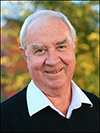Local Land Services
A view from the Chair of Murrumbidgee Landcare Inc, Dr Ted Wolfe.
Tarcutta Valley Landcare Group Newsletter Autumn 2013
As most Landcarers are aware, the Minister for Primary Industries (Hon. Katrina Hodgkinson) has set in train a process to amalgamate the functions previously performed by the advisory and regulatory staff of the NSW Department of Primary Industries (DPI), Catchment Management Authorities (CMA’s) and Livestock Health and Pest Authorities (LHPA’s). The amalgamation into Local Land Services (LLS) is in part being managed by a Reference Panel convened by Dr John Keniry, a Panel that has consulted widely with stakeholders on the LLS boundaries, various models of governance, and the types of services the LLS might provide.
Landcare NSW Chair Rob Dulhunty sits on the LLS Reference Panel, and has sought the views of a Landcare ‘working group’ on several LLS issues (I am a member of this group). The consultation process has helped inform the Panel on how community Landcare operates. Generally, this information flow has been a good thing, providing a positive start to the LLS-Landcare relationship. However, I am uncertain about how well the Reference Panel understands the extent to which the capacity of Landcare depends on volunteers and projects, the latter funded rather tenuously from a range of sources. The pool of volunteers available is finite, expandable only if additional volunteers or part-time employees can be found and resourced.
LLS will begin in the second half of 2013, with several former DPI and CMA positions gone forever, after a ‘spill’ of all positions and a competitive process of refilling only about 50% of the positions. Hence, there will be a net loss of experience and capacity in the new organisation. The LLS is expected to be fully operational for dealing with agricultural and NRM matters by 1st January 2014, with the LHPA’s being brought into the new organisation during 2014.
Overall, there is potential to achieve operational economies through one organisation rather than three. Staffing aside, the new LLS organisation may be in a better position structurally to:
- Harmonise agricultural and environmental goals - there are many sceptics, but Australians are appreciating the links between human activities and environmental phenomena;
- Invest in and utilise innovations such as satellite imagery for mapping and planning; and
- Form and promote stronger alliances, for example between public servants and public providers of services, the agricultural and environmental sciences, and between city folk and rural dwellers.
In theory, the LLS may produce operational benefits between the NSW and Australian Governments, particularly with respect to environmental programs involving landholders. The reality could be different however, depending as it does on State and Federal agendas involving politicians, bureaucrats and ‘stakeholders’ (us). One matter of current concern is the lack of any announcement on the successor to the current ‘Caring for Our Country’ program that funds the Regional Landcare Facilitator's. It is important that Landcarers are an active part of the social network on environmental matters, keeping a close eye on the political debates and subsequent policies. It is important also that a healthy proportion of NRM funds are channelled directly to Landcare networks, in addition to the funds going to the LLS for distribution. Landcare NSW will, we hope, continue to advocate on our behalf.
It is likely that Murrumbidgee Landcare will interact with the Southwest Riverina LLS (which includes the lower and central Murrumbidgee catchments as well as a fair slice of the Lachlan catchment) and the Southeast LLS (which includes the Yass-Goulburn-Palerang, Monaro, Snowy River and coastal shires).
Landcare members might consider nominating for positions on their LLS Board - 4 members will be selected from a pool of applicants with special skills, while 3-4 will be elected by rate-payers. There will also be a minimum of one Local Community Advisory Group to support each Regional Board.

